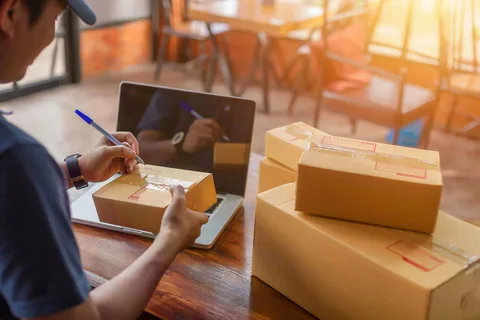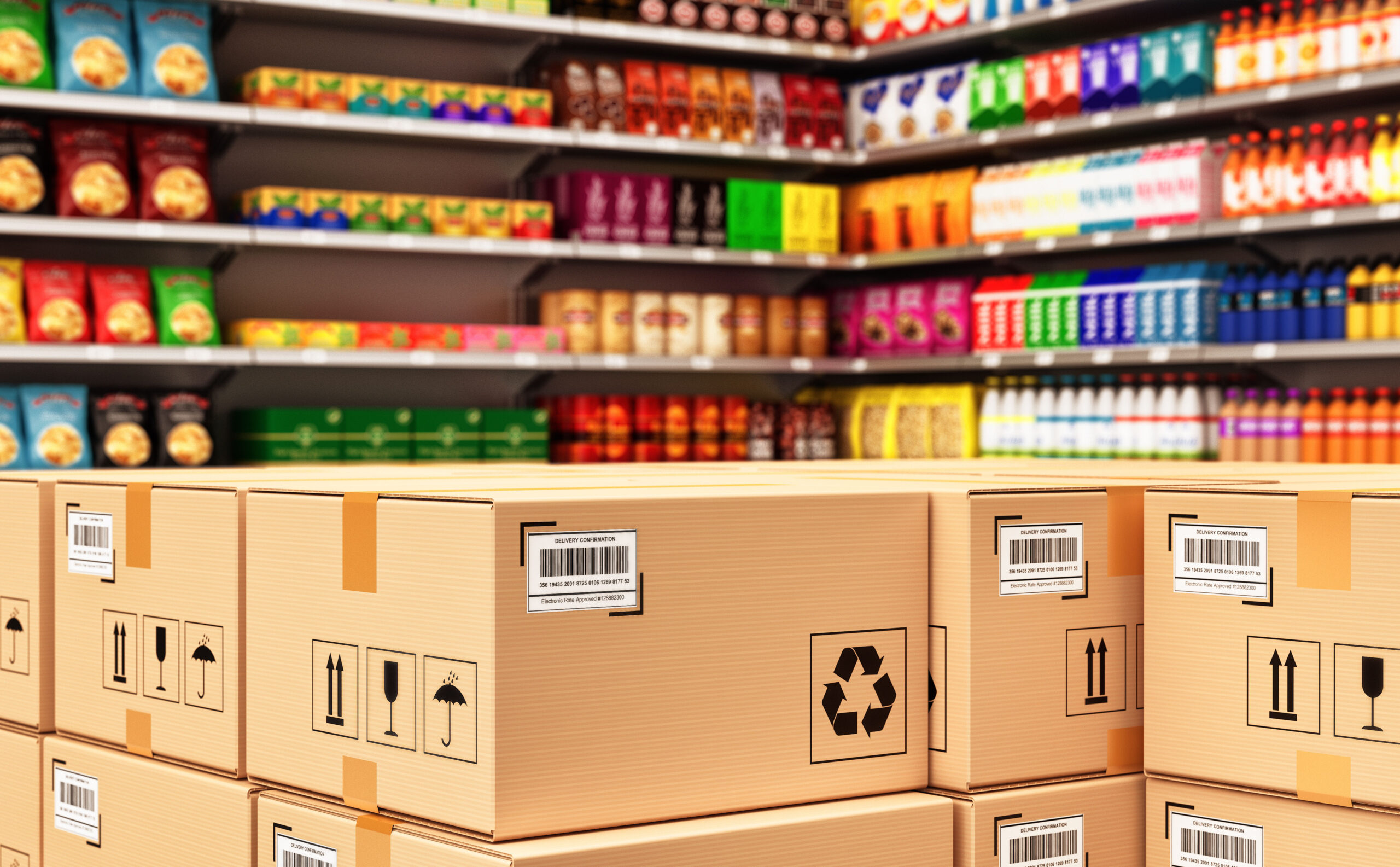In the realm of consumer goods, packaging is no longer just about containment—it is a core element of product strategy, branding, and environmental r
In the realm of consumer goods, packaging is no longer just about containment—it is a core element of product strategy, branding, and environmental responsibility. Boxed packaged goods, in particular, have taken center stage across multiple industries, thanks to their versatility, durability, and visual impact.
From shipping logistics to retail presentation and consumer psychology, boxed packaging plays a pivotal role in how products are perceived and experienced. This article explores the lifecycle of boxed packaged goods, from production to consumption, and dives into the current challenges and future innovations shaping the industry.
Must visit: primedomainhub

What Defines Boxed Packaged Goods?
Boxed packaged goods are products enclosed in box-style containers—commonly made from cardboard, corrugated fiberboard, or rigid board—for purposes such as protection, presentation, and transportation. This type of packaging is used across virtually all consumer sectors, including food, technology, fashion, cosmetics, and healthcare.
Whether it’s a cereal box, a smartphone box, or a subscription box full of curated items, boxed packaging serves not just as a container but as a platform for communication, branding, and sustainability.
The Role of Boxed Packaging in the Supply Chain
Packaging is a vital element in the supply chain, particularly for manufacturers, wholesalers, retailers, and logistics providers.
1. Manufacturing and Packing
Boxes allow for easy automation on assembly lines, saving labor and speeding up production. Pre-scored and pre-glued flat boxes are assembled quickly and filled with products efficiently.
2. Storage and Warehousing
Boxed goods are uniform in shape and stackable, making them ideal for palletizing and optimizing warehouse space. This reduces overhead costs in large-scale storage.
3. Transportation and Logistics
Corrugated boxes provide essential protection during transit. Their layered construction absorbs shock, protects against compression, and shields from moisture and dust.
4. Retail Display and Shelf Appeal
Retail-ready packaging is often pre-designed to go directly onto shelves. The box itself becomes part of the merchandising effort, influencing consumer decisions at the point of sale.
Branding Through Boxed Packaging
In the age of visual marketing, a product’s box serves as its silent salesperson. Here’s how boxed packaged goods become part of a brand’s identity:
– Color and Typography
The use of specific color schemes and font choices helps reinforce brand recognition. For example, Tiffany & Co.’s iconic robin’s egg blue box has become as recognizable as the jewelry inside.
– Material and Texture
Brands use embossing, foil stamping, soft-touch finishes, and premium materials to evoke emotion and quality. This is especially popular in luxury cosmetics and electronics.
– Structural Innovation
Custom-shaped boxes, magnetic closures, or layered unboxing experiences are ways brands deliver surprise, delight, and engagement.
– Storytelling and Messaging
Boxes are also a canvas for storytelling. From the product origin to brand values, messages printed on the inside or outside of the box connect consumers emotionally with the product.
Environmental Impact of Boxed Packaged Goods
As public awareness grows about environmental degradation, packaging has come under intense scrutiny. Boxed packaged goods, especially those made of paper-based materials, are more sustainable than plastic but still have environmental trade-offs.
1. Sustainable Materials
Eco-conscious brands are opting for:
- FSC-certified paperboard
- Recycled corrugated cardboard
- Compostable or biodegradable coatings
2. Waste Management
Boxes that are easy to flatten and recycle help reduce landfill contribution. However, laminated or coated boxes (e.g., with plastic film) can make recycling more difficult.
3. Carbon Footprint
Manufacturing and transporting packaging adds to carbon emissions. Brands are now measuring the lifecycle impact of their boxed packaging to optimize sustainability.
4. Reusable and Returnable Boxes
In e-commerce and subscription services, some companies use reusable packaging that customers return or repurpose, reducing single-use waste.
Market Trends Driving Boxed Packaging Innovation
Several trends are transforming how companies approach boxed packaged goods:
1. The Rise of E-Commerce
With online shopping on the rise, packaging must now serve dual purposes: surviving shipping conditions and providing a premium customer experience upon unboxing.
2. Subscription Economy
Boxes that deliver curated products (like meal kits or beauty samples) are designed to feel personal and engaging. This has created a new design standard in direct-to-consumer packaging.
3. Minimalism and Clarity
Cluttered packaging is falling out of favor. Consumers gravitate toward clean, well-organized design that quickly communicates value and usage.
4. Interactive and Smart Packaging
Boxed goods may now include QR codes, augmented reality (AR) experiences, or scannable authentication features, turning the box into an interactive experience.
Benefits of Boxed Packaged Goods for Brands and Consumers
– Protection and Durability
Boxes prevent product damage, especially during shipping. They can be engineered to fit the product snugly, preventing movement or breakage.
– Cost Control
Bulk manufacturing of standard box sizes allows companies to reduce packaging costs over time while still delivering consistent quality.
– Marketing Channel
Each box is an opportunity for customer engagement—through design, inserts, and creative messaging.
– Standardization
Boxes can be tailored for efficient shipping and storage, improving operational logistics and decreasing fulfillment times.
– Customer Satisfaction
When packaging aligns with a product’s price and brand promise, it leads to greater customer trust and repeat purchases.
Industries Where Boxed Packaged Goods Dominate
1. Technology
Smartphones, laptops, and other electronics require rigid and cushioned packaging. The unboxing experience often reflects the brand’s tech-savvy image.
2. Cosmetics and Beauty
Elegant folding cartons and magnetic boxes are common. The box adds perceived value and often becomes part of the consumer’s vanity display.
3. Food and Beverage
Dry goods, frozen foods, and even high-end chocolates rely on boxed packaging for hygiene, shelf-life, and branding.
4. Healthcare and Pharmaceuticals
Boxes ensure compliance with health regulations while organizing information like expiration dates, lot numbers, and dosage.
5. Luxury Goods
Watches, jewelry, fragrances, and fashion items use high-end packaging to enhance exclusivity and appeal.
Future of Boxed Packaged Goods
Looking forward, boxed packaged goods will continue to evolve with global demands:
– AI-Driven Customization
Artificial intelligence will assist in designing and testing boxes that minimize material use while maximizing protection and aesthetics.
– Circular Economy Integration
More brands will create closed-loop systems where packaging is either biodegradable or fully reusable within a circular business model.
– Smart Inventory Management
Boxes with embedded RFID or NFC chips will enable real-time tracking, reducing loss and improving supply chain transparency.
– Consumer Co-Creation
Brands may let customers customize their own boxes online, turning packaging into a shared creative process.
FAQs: Boxed Packaged Goods
1. What makes boxed packaging better than plastic or flexible packaging?
Boxed packaging provides better structural integrity, branding real estate, and a premium feel. It’s also easier to recycle than mixed-material plastic pouches.
2. How can small businesses afford custom boxes?
Digital printing and short-run production allow small businesses to create branded boxes in smaller quantities at a reasonable cost.
3. Are all cardboard boxes biodegradable?
Plain cardboard without coatings is biodegradable. However, boxes with plastic film, wax, or metallic elements may not break down naturally.
4. How do companies ensure boxes survive shipping?
They use corrugated cardboard, internal supports like molded pulp or foam, and reinforced seams to enhance strength during transit.
5. What is “retail-ready packaging”?
Retail-ready packaging is designed to go directly from shipping carton to store shelf, minimizing labor and maximizing visual appeal in stores.
6. How do I know if my boxed packaging is sustainable?
Look for certifications like FSC, labels like “100% recycled,” and materials that are plastic-free or biodegradable. Companies often disclose this on the box or website.
7. Why is the unboxing experience important in e-commerce?
It’s the customer’s first physical interaction with the brand. A great unboxing creates a memorable moment and can increase loyalty and social media sharing.
Conclusion
Boxed packaged goods are far more than simple containers—they are brand ambassadors, logistical assets, and sustainability opportunities. As the market evolves and consumer expectations rise, boxed packaging must strike a balance between form and function, cost and quality, design and responsibility.
With continued innovation in materials, design, and technology, boxed packaging will remain an essential component of modern commerce. Brands that invest in thoughtful, well-engineered packaging will not only protect their products—but also amplify their story in a competitive marketplace.

COMMENTS